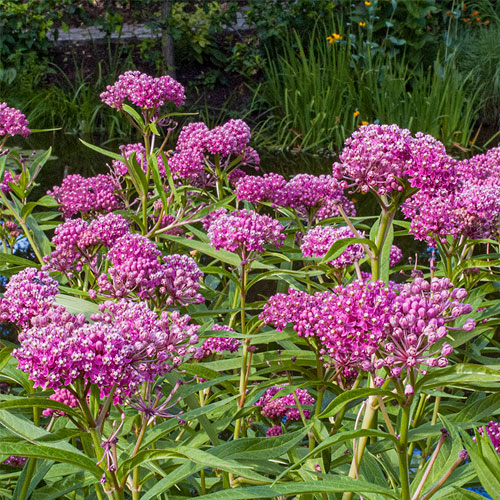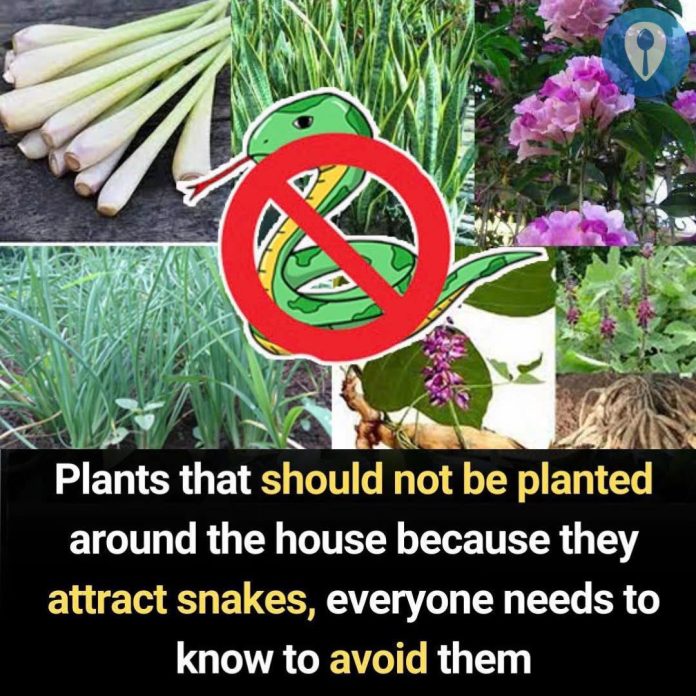Maintaining a well-kept garden enhances the aesthetic appeal of your home and contributes to a safe and comfortable environment. However, certain plants can inadvertently attract snakes by offering them shelter, food sources, or suitable habitats. Understanding which plants may draw snakes and the reasons behind their attraction is crucial for homeowners aiming to minimize encounters with these reptiles.
1. Milkweed (Asclepias spp.)
Milkweed is renowned for attracting butterflies, particularly monarchs, due to its nectar-rich flowers. However, this plant can also attract snakes. The dense foliage provides ample cover, and the insects drawn to milkweed may serve as a food source for smaller snakes. Regular pruning of milkweed can help reduce its density, making it less appealing to snakes.

2. Honeysuckle (Lonicera spp.)
Honeysuckle’s fragrant blossoms are a magnet for pollinators like bees and butterflies. This abundance of insect activity can, in turn, attract snakes searching for prey. Additionally, the dense growth habit of honeysuckle provides excellent hiding spots for snakes. To mitigate this, consider regular trimming to maintain an open structure and reduce potential snake habitats.
3. Juniper (Juniperus spp.)
Juniper shrubs are popular for their low maintenance and evergreen foliage. However, their dense, ground-covering branches create ideal hiding spots for snakes. The thick canopy offers protection and a cool environment, especially in warmer climates. If you choose to plant junipers, ensure they are well-spaced and regularly pruned to minimize dense coverage.
4. Cedar (Cedrus spp.)
Cedar trees and shrubs, while valued for their aromatic wood and ornamental appeal, can attract snakes. The fallen needles and dense lower branches create a cool, shaded ground layer that snakes find inviting. Regularly clearing fallen debris and pruning lower branches can help deter snakes from settling in these areas.
5. Clover (Trifolium spp.)
Clover is often used as ground cover due to its nitrogen-fixing properties and lush green appearance. However, it attracts insects and small rodents, which are primary food sources for many snake species. Additionally, the low-growing, dense mats provide concealment for snakes. Maintaining a tidy lawn and controlling rodent populations can reduce the likelihood of snakes being attracted to clover patches.
6. Taro (Colocasia esculenta)
Commonly known as elephant ear, taro features large, broad leaves that create substantial shade and ground cover. These characteristics can attract snakes seeking cool, concealed spots. If you cultivate taro, consider planting it in containers or areas away from the main residence and pathways.
7. Bougainvillea (Bougainvillea spp.)
Bougainvillea is admired for its vibrant blooms and vigorous growth. However, its dense, thorny branches can provide excellent shelter for snakes and their prey, such as rodents and birds. Regular pruning and strategic placement away from living areas can help minimize its attractiveness to snakes.
8. Ginger (Zingiber officinale)
Ginger plants thrive in moist, shaded environments, conditions that are also favorable to snakes. The dense foliage offers ample hiding spots, making it an appealing habitat. To reduce this risk, plant ginger in well-lit areas and maintain proper spacing between plants.

General Recommendations to Deter Snakes:
- Maintain a Tidy Landscape: Regularly mow lawns, trim shrubs, and remove debris to eliminate potential snake habitats.
- Control Rodent Populations: Since rodents are a primary food source for many snakes, implementing measures to keep their numbers in check can make your property less appealing to snakes.
- Choose Snake-Repellent Plants: Incorporate plants known to deter snakes, such as marigolds, lemongrass, and certain herbs like rosemary and basil, into your garden design.
- Install Physical Barriers: Consider installing snake-proof fencing, ensuring it is properly sealed at the base to prevent snakes from slithering underneath.
By being mindful of the plants you choose and maintaining your garden diligently, you can significantly reduce the likelihood of attracting snakes to your property.

















